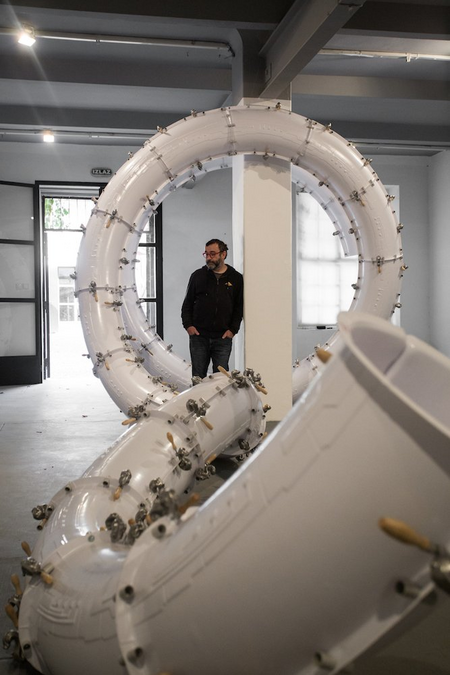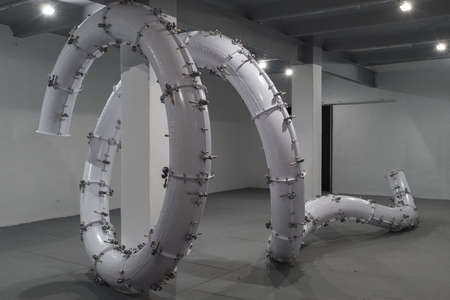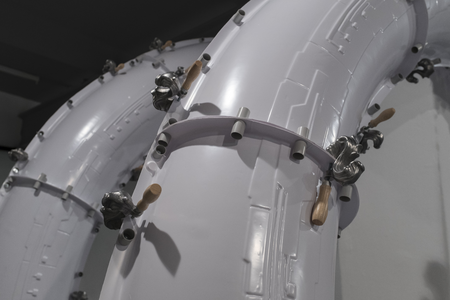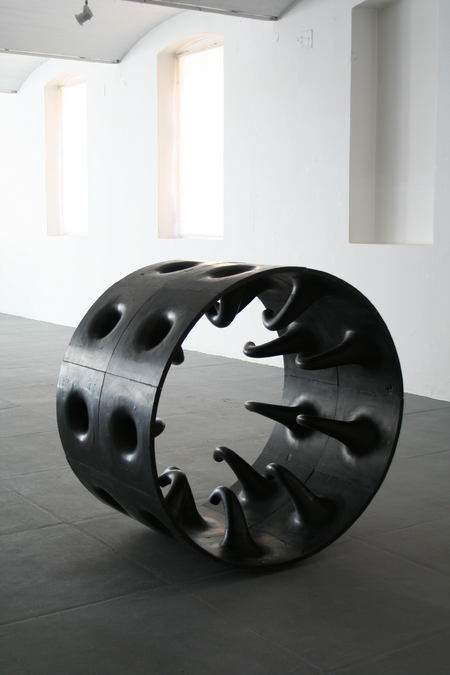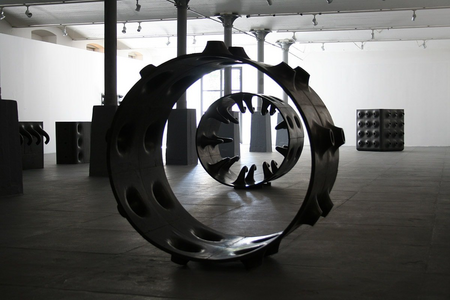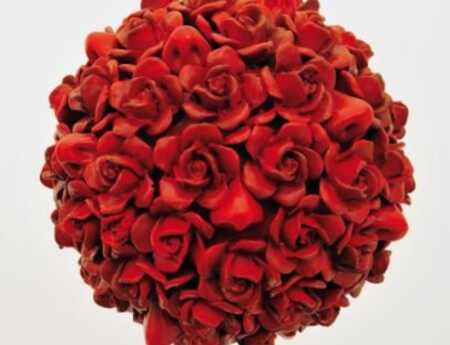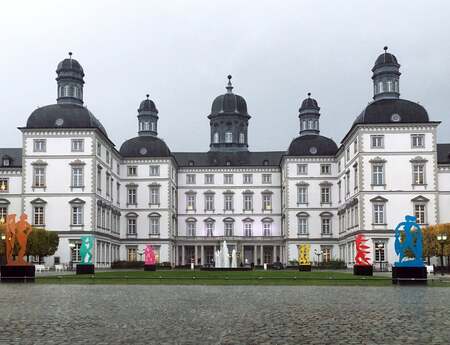Instant Inventory at the 13th Triennial of Sculpture in Zagreb
Between mass production and the golden ratio: the artist Neven Bilić sees the same value in his machine built systems as in other aesthetic symbols. We experienced his work "Instant Inventory" - and asked him all about it.
Neven Bilić was born in Zagreb, in 1972. He graduated from the Sculpture Department of the Academy of Fine Arts, in 1995, where he now works as an associate professor. Exhibiting his works at around thirty group shows and around twenty solo exhibitions, as well as in public spaces, he is a prolific creator and an active participant in the Croatian sculpture scene. Bilić works with modular multiplication principles of sculpture construction, carefully developing relationships between structure, ornament and space.
The more than a dozen prizes that he has won in past few years include the Grand Prix at the 12th Triennial of Sculpture, Zagreb in 2015. Consequently, he has been invited to do a solo exhibition as a part of this year’s 13th Triennial of Sculpture in Zagreb. The work exhibited, Instant Inventory, is the theme of this interview.
Your work is based on the multiplication of industrially produced modules, which imply a loss of direct contact between the artist and his work. What are the implications of such a procedure for you as an artist?
This procedure might give the impression of such a loss, but the contact between the artist and the work actually exists on every level. Since I produced the prototype of the model on which the multiplication is based, I also worked on the multiplication and I have been present at each stage in the process. I even constructed the machine for the multiplication. It is a machine for thermal formation. It took me several months, first to research the technological possibilities, then for the production itself, including prototypes, mistakes, and unsatisfactory results.
Considering your previous work, what type of innovation does Instant Inventory, your latest work shown at the 13th Croatian Triennial of Sculpture, present? Can you describe the process?
The multiplication of the Instant Inventory model is characterized by a procedure that stands in contrast to my previous work. In this case the negative form of the mold is replaced by the positive, in other words by the tool that enables the multiplication. New ways to approach the composition of the object also appear. In my opinion, construction elements and systems have the same value as aesthetic symbols.
What is the role of the modular multiplication principle, why are you interested in it and, in your opinion, what is its significance?
Contrary to the general, more traditional thinking of sculpting as a deeply contemplative act and the creation of a unique form by the hand of the master, the principle of the multiplication marks the process of fast, instant creation. In this case it is the interconnection of the typical characteristics that have appeared in my work over the last several years as they have developed further. It is the sum of the visual input that forms our world view. We are conscious of the categorization and affiliation of the codes and symbols, but their interaction creates a world of mixed-up codes. It is a world deprived of clear beginnings and full of unknown origins. That is why a kind of senseless inventory making and archiving (that presupposes detailed description of the current state in terms of location and numbers of the elements in the series) without a clear plan becomes the main framework of this idea.
Why did you use the Fibonacci sequence? Does it hint at the relation between natural order and industrial principles? Is there a discrepancy in this relation?
Let me be entirely pragmatic. The Fibonacci sequence, in this instance, was used simply as an extraordinarily practical tool. In the process of searching for visual order in the structure, as well as for the optimal interrelation of numbers, the Fibonacci sequence proved to be a good solution. Although in the beginning, I was not really fascinated by this sequence of numbers, it really brought me to the optimal solution.
What is the relation between the sculpture and the gallery space, since Instant Inventory looks like it was constructed specifically for this site in the Glyptotheque ?
From the beginning Instant Inventory was defined as a site-specific work. I started to think about the work when I was invited to exhibit in the Glyptotheque, and as a consequence, the simple spatial and architectonic characteristics of the space have led the work in this direction to where it is right now. In the production itself, there was nothing unexpected, except, of course, some unpredictable problems with construction and static. Luckily, everything turned out as I had originally hoped.
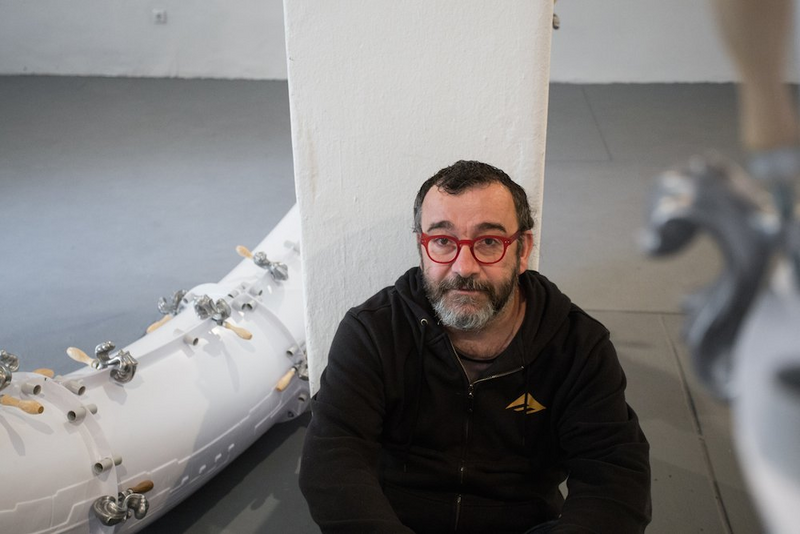
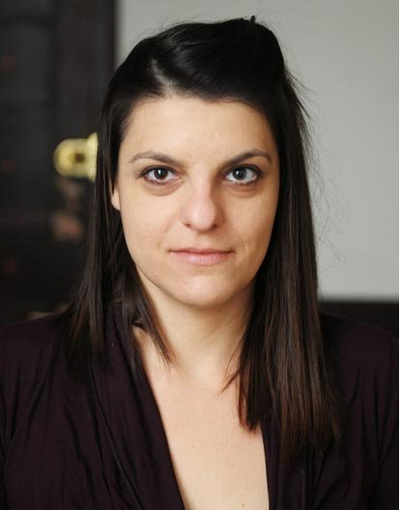
Author: Josipa Bubaš
Josipa Bubaš publishes art reviews at the Croatian Radio 3, in magazines and forums and writes exhibition previews. At the moment, she is finishing her Ph.D. studies at the Interdisciplinary Humanistic Sciences Department, University of Zadar, dealing with the Performativity of the Body. She works as a performer/co-author with different choreographers and also creates solo works.
